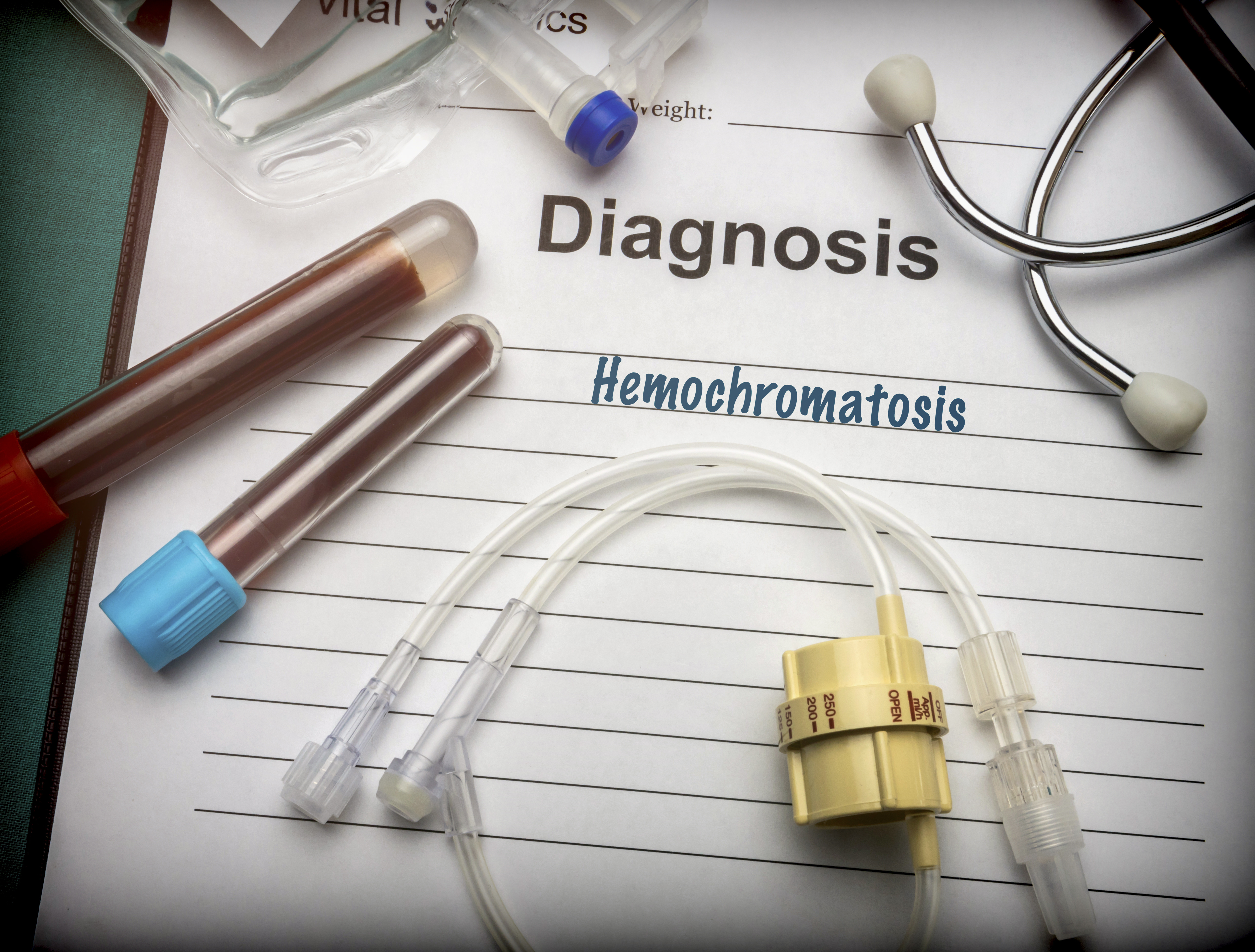Haemochromatosis
Hereditary haemochromatosis (congenital, hereditary iron overload) is a condition in which the body absorbs too much iron from the diet, resulting in an iron overload in the body. Timely diagnosis is important, because the iron overload can cause various symptoms and organ damage.
Iron overload is the most common genetic anomaly in northern Europe and occurs in one in 200 to one in 400 people. In the Belgian population, one in every ten people is the carrier of a fault in the gene responsible for hereditary haemochromatosis.
Symptoms and causes
Symptoms and causesSymptoms
Symptoms can occur when the iron accumulates in the body for a long period of time. The symptoms vary: tiredness, joint problems, skin discoloration, heart problems, hormonal disorders such as diabetes... Each patient can have different symptoms, and the symptoms can differ in intensity from person to person.
The iron overload often occurs in the liver, resulting in liver disorders. This can manifest itself in an enlarged liver and in disrupted liver values when blood is drawn. Failure to detect haemochromatosis in time can cause permanent damage to the liver, known as fibrosis (scarring) or cirrhosis (severe scarring of the liver).
Other organs can also be affected in more advanced forms of haemochromatosis resulting in the following problems: diabetes mellitus (diabetes), heart problems, hormonal fluctuations with, for example, loss of libido, impotence or early menopause and reduced functioning of the thyroid gland (hypothyroidism).

Diagnosis and treatment
Diagnosis and treatmentDiagnosis
If haemochromatosis is suspected, the physician will take a blood sample to measure the values of 'ferritin' and 'transferrin saturation' in your blood, among other things. Ferritin reflects the iron value in the body, and transferrin saturation is a measure of the amount of iron in the blood. If these values are elevated and no other cause is found (e.g. fatty liver, inflammation, alcohol consumption), a genetic blood test (DNA testing or heredity test) will follow. DNA testing will reveal whether there is a fault in the haemochromatosis gene and whether or not you have hereditary haemochromatosis.
Family history
When a patient is diagnosed with an iron overload, this means that his or her parents, siblings and children may also have haemochromatosis. This means that a genetic test can also be carried out on them. We recommend this test from the age of 18 and after having sufficiently explained the consequences of an abnormal DNA test.
Treatment
If haemochromatosis is diagnosed, the physician will ask you to start exsanguination, depending on your blood values. You will have about 500 ml of blood taken at the hospital (comparable to donating blood as a donor in a specialised centre). Iron will be removed from your body using this method.
The frequency of exsanguination varies from person to person. Depending on the blood values, in the beginning this will be done every week to every fortnight. When the iron parameters in the blood are normalised, the frequency will be gradually reduced to one exsanguination per month or every three to four months. Checking the iron values and other blood values, together with exsanguation, ensures that the frequency of exsanguation can be adjusted each time.
An exsanguation is made by inserting a hollow needle into a vein in your arm. This needle is connected to a collection bag. Once you have given the required amount of blood, the needle will be removed. On average, exsanguation takes 30 to 40 minutes.
If iron accumulates in the liver in patients with haemochromatosis, it is best to be vaccinated against hepatitis A and B, if the person in question does not already have antibodies for these diseases. This can be done at your GP's office.
Examinations
After confirming the hereditary haemochromatosis diagnosis, the physician may order the following tests for you:
- Blood tests (such as hormonal parameters, hepatitis A and B antibodies, thyroid function, diabetes parameters, liver tests)
- Ultrasound or scan of the liver
- Fibroscan and/or liver biopsy
- Ultrasound of the heart
- Bone density measurement within the framework of osteoporosis
If an examination does not apply to you, it will not be conducted.
Source: http://www.haemochromatose.be/
Treatment centres and specialisations
Treatment centres and specialisations
Latest publication date: 25/09/2024
Supervising author: Dr Monsaert Els
Something wrong or unclear on this page? Report it.
Supervising author: Dr Monsaert Els




